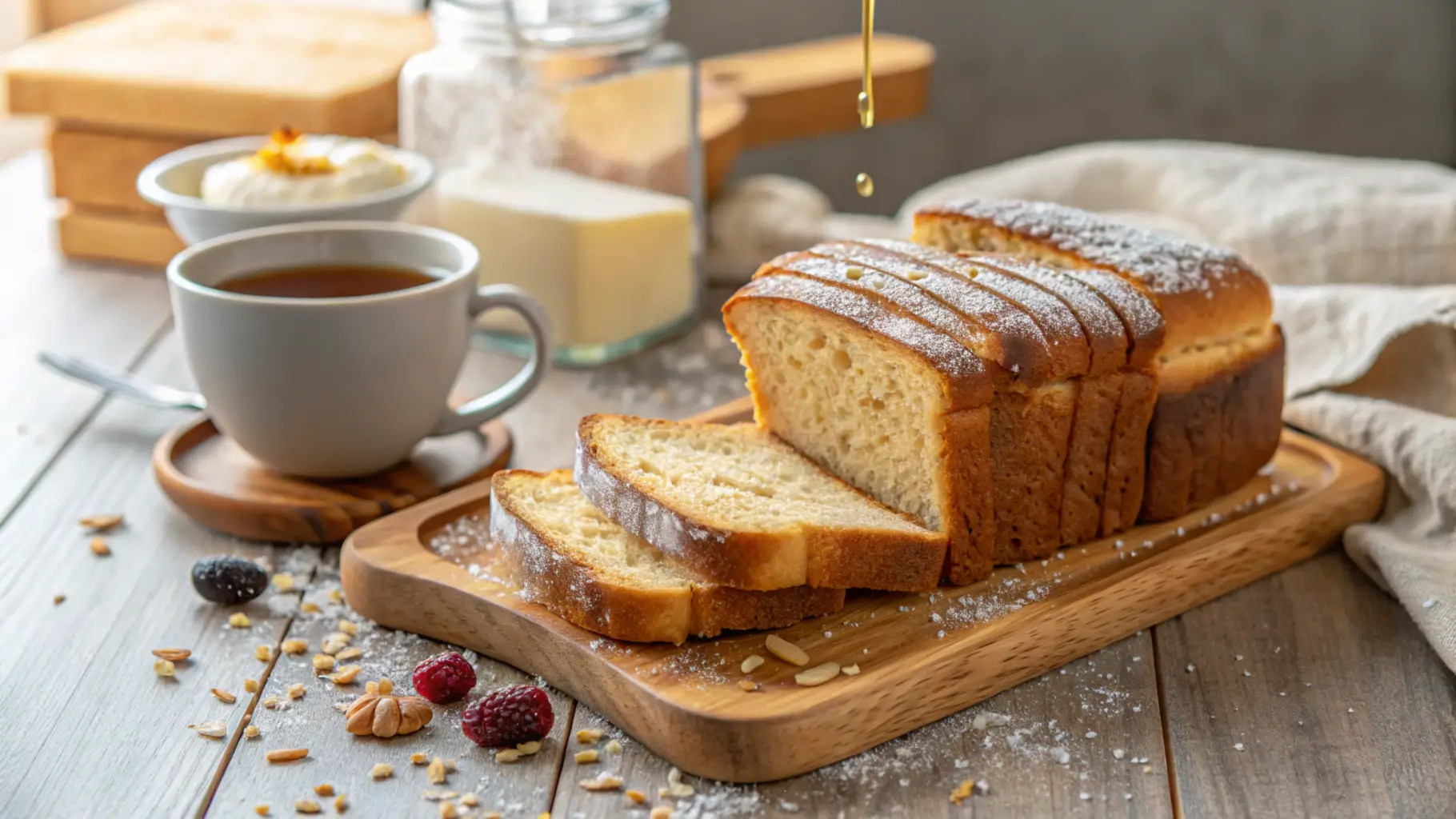Should brioche be toasted? Brioche, a buttery French bread known for its soft texture and rich flavor, is perfect for both sweet and savory creations. Toasting brings out new flavors and adds a crisp, golden texture, ideal for gourmet sandwiches or breakfast dishes. However, leaving it untoasted preserves its delicate, airy nature, making it perfect for soft spreads or as a standalone treat. For a creative twist, consider trying this brioche French toast recipe, which turns the bread into a custardy, golden masterpiece.
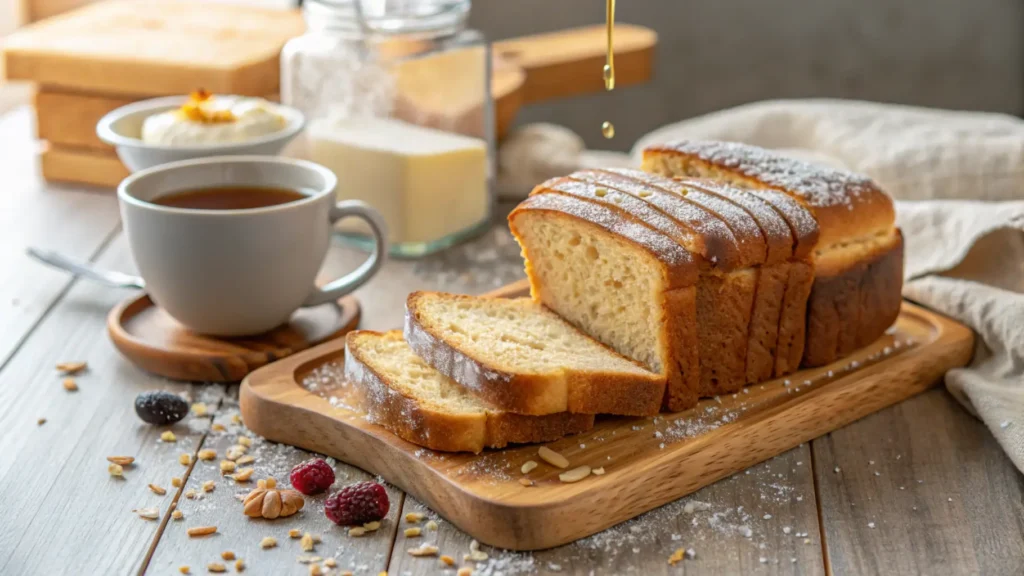
Table of Contents
What Is Brioche? Understanding This French Classic
Before asking whether brioche should be toasted, it’s essential to understand what makes this bread so unique. Made with butter, eggs, sugar, and yeast, brioche boasts a sweet flavor and a soft, airy texture. While it originated in France, its versatility has made it a favorite worldwide, lending itself to both sweet and savory dishes, from breakfast creations to desserts and gourmet sandwiches.
Toasting brioche alters its texture and enhances its flavor, making it an excellent choice for recipes like French toast. Learn why brioche is ideal for French toast and how its rich qualities contribute to creating the perfect dish.
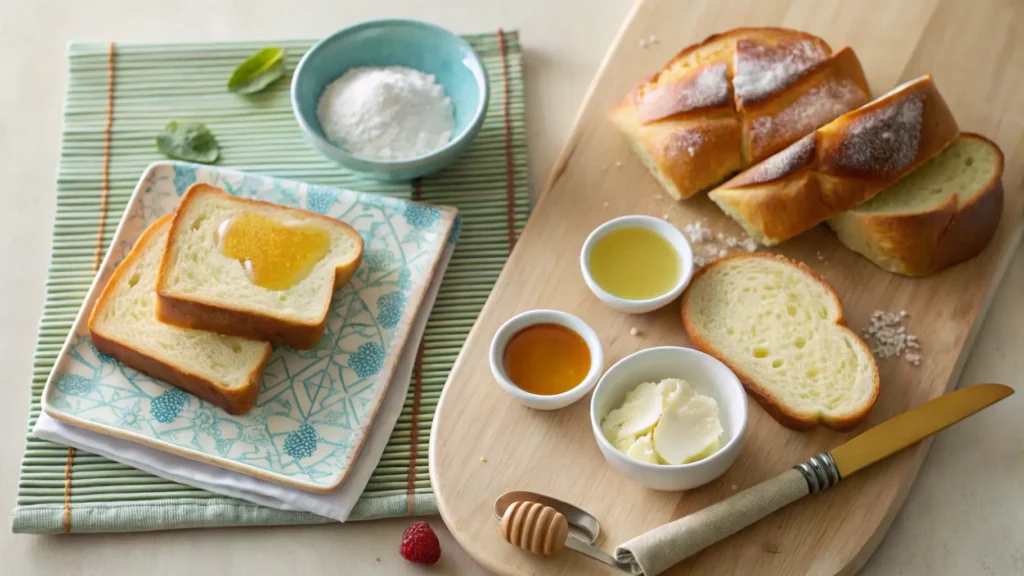
The Debate: Toasted vs. Untoasted Brioche
When deciding whether to toast brioche, you should consider its texture and flavor.
Toasted Brioche
Toasting gives brioche a crispy, golden crust with a nutty flavor. It firms up, making it ideal for holding spreads, eggs, or melted cheese. The crunch adds contrast, making it perfect for savory dishes.
Untoasted Brioche
Untoasted brioche keeps its soft, buttery texture and delicate sweetness. It works well for dishes like French toast or sandwiches where the bread complements the filling without overpowering it.
Ultimately, whether to toast or not depends on personal preference and the dish.
Popular Uses for Toasted Brioche
Toasting brioche can dramatically alter the bread’s texture and flavor, making it suitable for a wide range of applications. So, should brioche be toasted? If you are planning to use it for certain dishes, the answer is likely yes.
Here are some popular uses for toasted brioche:
- Breakfast Dishes: Toasted brioche can be the perfect base for eggs, avocado, or smoked salmon. The crispy edges contrast with creamy fillings, adding depth to the flavor.
- Burgers: Many chefs swear by toasted brioche for burgers. The toastiness holds up well against juicy patties and adds texture, preventing the bun from becoming soggy.
- Grilled Cheese: Toasted brioche adds an indulgent twist to a classic grilled cheese sandwich, giving it a buttery, crisp exterior that pairs beautifully with gooey cheese.
- French Toast: While brioche is often the bread of choice for French toast, toasting it first adds a delightful crunch and makes it even more decadent.
By toasting brioche, you can introduce exciting textures and intensify its natural flavors, making it ideal for a variety of culinary applications.
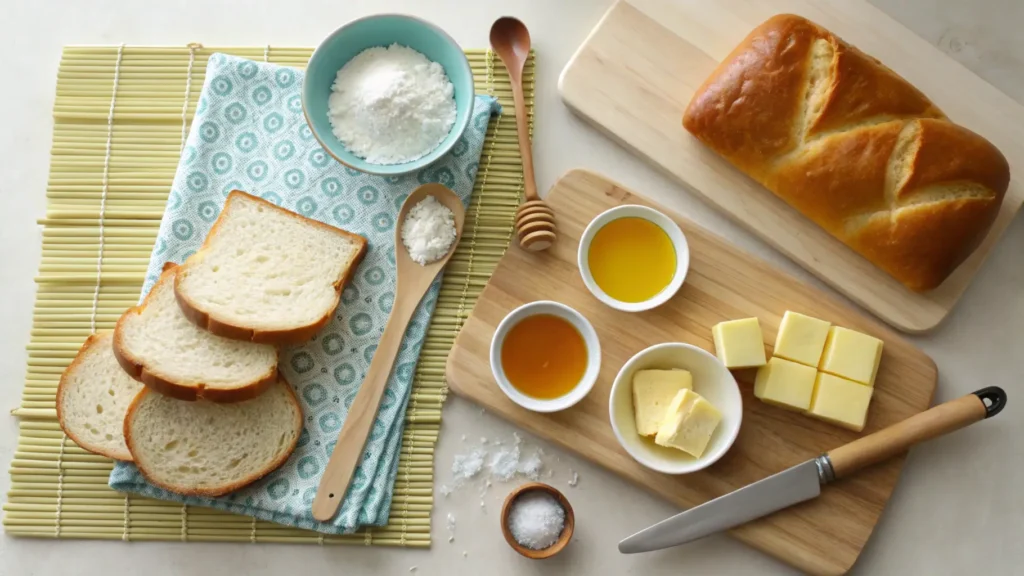
How to Toast Brioche Perfectly
If you’ve decided that brioche should be toasted, mastering the perfect toast is essential. Toasting brioche requires careful attention, as the high fat content can cause it to burn quickly. Here are some tips for achieving that ideal golden, crispy result:
- Use Medium Heat: Toast brioche over medium heat, either in a skillet or in a toaster oven. High heat can burn the bread before it crisps up properly.
- Butter or Oil: While not mandatory, butter or oil can help achieve a richer, more flavorful toast. Spread a thin layer of butter on the cut sides before toasting for a golden finish.
- Monitor Closely: Since brioche contains a lot of sugar, it can burn quickly. Keep an eye on it to prevent it from becoming overly dark or charred.
- Toast Both Sides: Make sure both sides of the brioche get an even toast for the best texture. You can flip it halfway through to ensure even browning.
Toasted brioche can be a wonderful base for a variety of dishes, from breakfast to dessert, and following these tips will ensure you get the perfect crispy yet soft result every time.
Pairings for Toasted and Untoasted Brioche
The question of should brioche be toasted depends on what you’re pairing it with. Both toasted and untoasted brioche offer great combinations.
Toasted Brioche Pairings:
- Savory Spreads: Pairs well with cream cheese, avocado, or pâté. The crisp texture complements creamy fillings.
- Eggs: Works beautifully with scrambled, poached, or fried eggs, offering a crunchy contrast.
- Cheese: Strong cheeses like cheddar or Gruyère are perfect, especially in grilled cheese sandwiches.
Untoasted Brioche Pairings:
- Sweet Spreads: Ideal for honey, fruit preserves, or Nutella, letting the bread’s softness complement the sweetness.
- Sandwiches: Great for delicate sandwiches with turkey, brie, or roasted veggies.
- Desserts: Often used in bread pudding or French toast, where it absorbs custards and syrups perfectly.
Ultimately, whether to toast or not depends on the dish and personal preference.
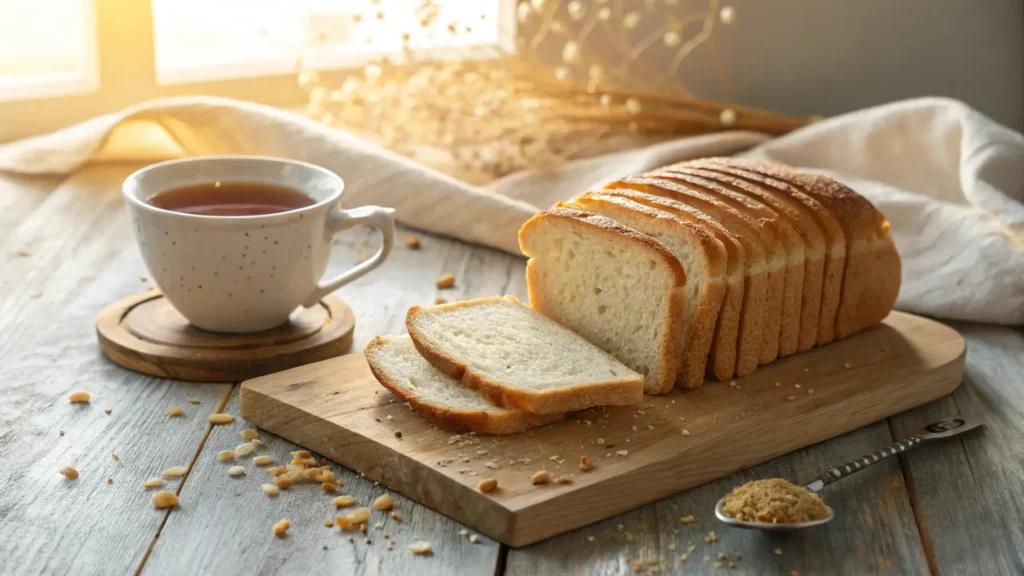
Nutritional Implications of Toasting Brioche
Toasting brioche doesn’t significantly change its calories or carbs, but it can slightly lower its glycemic index (GI). The heat makes some starches more resistant, leading to slower blood sugar increases.
If you toast brioche with butter or oil, it adds extra calories and fat, so it’s important to control the amount used. Without added fat, the nutritional difference between toasted and untoasted brioche is minimal.
In short, toasting brioche has little nutritional impact, and the choice largely comes down to personal preference.
Does Toasting Affect the Flavor of Brioche?
When considering whether brioche should be toasted, it’s essential to evaluate how toasting affects its flavor. Toasting triggers the Maillard reaction, caramelizing the bread’s sugars. This enhances its flavor complexity, adding nutty and slightly bitter undertones to brioche’s natural sweetness and buttery richness.
Untoasted brioche, on the other hand, retains its delicate, airy texture and pronounced buttery sweetness. The natural flavors shine, offering a softer mouthfeel and lighter taste. If you enjoy subtle sweetness and softness, untoasted brioche is ideal. However, toasting is perfect for those who prefer a richer, more intense flavor that pairs well with robust fillings. For creative ways to enjoy toasted or untoasted bread, you can explore these cottage cheese recipes for pairing ideas that highlight brioche’s versatility.
The Best Occasions to Serve Toasted Brioche
So, should you toast brioche for all occasions? Not necessarily. Toasting brioche works best in certain situations where you need to adjust its texture and flavor to complement the dish. For example:
- Breakfast Dishes: Toasted brioche makes a great base for eggs, avocado, or smoked salmon. The crispy exterior contrasts with the softness of the filling.
- Savory Sandwiches: For sandwiches that include rich fillings like egg, bacon, or cheese, toasting brioche helps hold everything together and adds a satisfying crunch.
- Grilled Cheese: Toasted brioche adds an extra layer of buttery crispness when used for grilled cheese sandwiches, enhancing the overall experience.
- French Toast: While brioche is often the bread of choice for French toast, toasting it beforehand creates a beautiful texture that holds up well to egg custard and syrup.
These are just a few occasions where toasting brioche works well. However, in other cases, like making desserts or light sandwiches, you may prefer to leave it untoasted for a softer, more tender texture.
What to Avoid When Toasting Brioche
Toasting brioche might seem simple, but a few common mistakes can arise when deciding whether to toast it. If you’re not careful, you may end up with bread that’s too dry or burnt. Here are some things to watch out for:
- Using High Heat: Brioche contains a lot of butter and sugar, which means it can burn quickly. Always toast at medium heat to achieve an even, golden brown color without charring.
- Overloading with Butter: While a little butter adds flavor, using too much can make the bread greasy rather than crispy. Apply a thin, even layer to avoid sogginess.
- Skipping the Flip: When toasting in a pan, flip the brioche to ensure both sides toast evenly. This ensures a consistent texture and flavor on both sides.
- Using the Wrong Equipment: Not all toasters or pans are suitable for brioche. It’s best to use a heavy-duty pan or toaster oven that allows for controlled heat and even browning.
By avoiding these common mistakes, you can toast brioche perfectly every time. Whether you’re looking for a crisp, golden surface or just a light toasting, paying attention to the process will make a big difference.
Brioche as a Sandwich Bread: Toasted vs. Untoasted
One of the most common debates about whether to toast brioche centers around its use as sandwich bread. People often praise brioche for its soft, buttery texture, which makes it a favorite for sandwiches. However, the decision to toast it can drastically change the overall experience.
- Toasted Brioche for Sandwiches: Toasting brioche for sandwiches adds a layer of texture and firmness that helps it hold up to moist ingredients like tomatoes, sauces, or juicy meats. The crisp edges provide a satisfying contrast to the softness of fillings.
- Untoasted Brioche for Sandwiches: When left untoasted, brioche retains its soft, pillowy texture. This makes it ideal for sandwiches that are not too messy, allowing the bread to complement delicate ingredients such as turkey, brie, or smoked salmon without overpowering them.
The choice between toasted or untoasted brioche as sandwich bread depends on the fillings and the type of texture you’re after. For a sandwich with a substantial or juicy filling, toasted brioche will likely perform better. If you want a softer bite with a more melt-in-your-mouth experience, you might opt for untoasted brioche.
Toasting Techniques: Oven, Pan, and Toaster
If you decide to toast brioche, several methods offer slightly different outcomes. The method you choose depends on the texture you desire and the tools you have on hand.
- Oven Toasting: Preheat your oven to around 350°F (175°C). Arrange the slices of brioche on a baking sheet and toast for 5-7 minutes, flipping halfway through. This method provides an even toast with a slightly crunchy exterior and a soft interior.
- Pan Toasting: Heat a skillet or griddle over medium heat. Add a little butter and toast each slice for about 2-3 minutes per side. Pan toasting adds a buttery richness and a more pronounced crispy texture.
- Toaster Toasting: If you’re in a rush, a toaster works well for small slices of brioche. Keep an eye on the bread, as brioche tends to brown faster than other types of bread due to its high sugar and butter content.
Each technique has its merits. Oven toasting provides an even crispness, while pan toasting gives the bread an extra layer of buttery flavor. The toaster, while quick, is best for those who are looking for a simple toasting method.
Can All Types of Brioche Be Toasted?
Whether you should toast brioche depends on the type you’re working with. Not all brioche is the same, and some variations toast better than others.
- Traditional Brioche: The classic version of brioche, made with butter, eggs, and a touch of sugar, toasts beautifully. It’s soft yet firm enough to hold up to toasting methods like pan frying or oven baking.
- Brioche Buns: Often used for burgers, brioche buns are slightly firmer than traditional loaves. Toasting these buns can add a nice texture and make them perfect for holding heavy fillings.
- Chocolate or Fruit Brioche: Brioche enriched with chocolate chips, fruits, or other sweet additions might not be the best candidates for toasting. While you can still toast them, the caramelization of sugar could overpower the delicate flavors of the added ingredients.
When deciding whether to toast brioche, consider the type you’re using. Traditional, plain brioche toasts best, while variations with added sweetness or delicate ingredients are better left untoasted to preserve their flavor profile.
Storing Toasted Brioche for Later Use
Toasting brioche doesn’t just affect its flavor; it also affects how it stores. If you’ve made a large batch of toasted brioche and want to keep it for later, there are a few steps to ensure it stays fresh:
- Cool Completely: Allow the toasted brioche to cool fully before storing it. If it’s still warm, condensation can cause it to become soggy.
- Store in an Airtight Container: Place the cooled brioche slices in an airtight container or resealable plastic bag to keep them fresh. However, be aware that toasted brioche is best eaten within a day or two, as it tends to lose its crispness over time.
- Freezing Toasted Brioche: For longer storage, you can freeze toasted brioche. Place slices in a freezer bag and store them for up to 1-2 months. To reheat, toast them directly from frozen for a quick, crispy snack.
While toasted brioche is best enjoyed fresh, these storage tips can help you save any extra slices for later use without losing too much quality.
FAQs About Toasting Brioche
Here are some common questions related to should brioche be toasted, along with helpful answers:
1-How is brioche traditionally eaten?
Brioche is traditionally eaten as a breakfast bread with butter, jam, or used in French toast. It’s also enjoyed in savory dishes, like sandwiches or alongside rich stews.
2-Do you toast a brioche bun?
Yes, brioche buns are often toasted, especially for burgers. Toasting adds crunch and enhances the buttery flavor, making them sturdier for juicy fillings.
3-Is brioche healthier than normal bread?
No, brioche is richer in butter, sugar, and eggs, making it higher in calories and less nutritious than regular bread, which tends to be lower in fat and sugar.
4-Should you grill brioche buns?
Grilling brioche buns is a great option. It adds a smoky flavor and crisp texture, while keeping the inside soft, perfect for holding moist fillings.
Conclusion
In conclusion, the question of whether brioche should be toasted ultimately depends on your personal preference and the dish you’re preparing. Toasting brioche brings out a deeper, caramelized flavor and adds a delightful crunch that works well for many savory and breakfast dishes. However, for more delicate applications like sweet sandwiches or pastries, a softer texture might be preferable. If you’re interested in perfecting other baked goods, you may find valuable insights in Eclair Icing and Baking Secrets: Everything You Need to Know About Eclairs, which covers essential techniques for achieving the perfect éclair.

